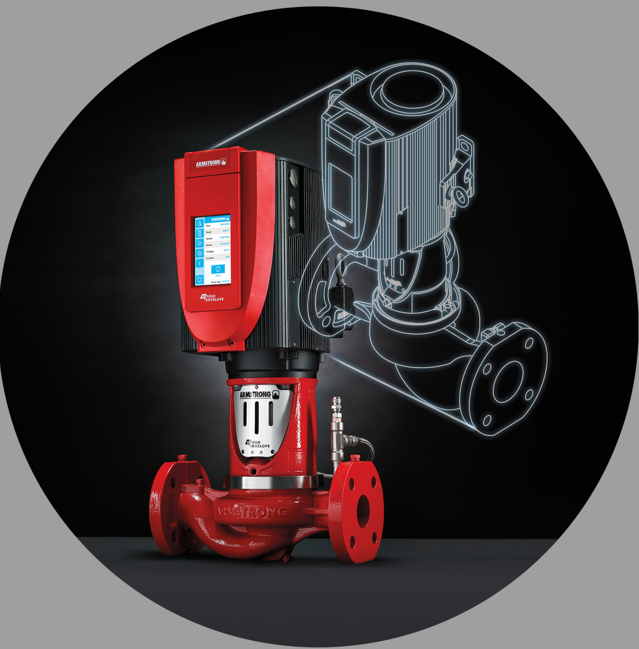Kevin Laidler – Sales Director, Middle East and Africa, Armstrong Fluid Technology, discusses how Digital technology is key to addressing regional challenges in the HVAC industry to improve life cycle costing.
Energy plays a crucial role in our daily lives, and in our economy. More than just a basic human necessity, energy is a strong indicator of social and economic development. As our world becomes more and more urbanised, we are witnessing a rapid increase in the global demand for energy, with predictions for growth of up to 55% over the next ten years.
Our forecasted increase in consumption, coupled with the ongoing global energy crisis, has triggered concern around energy security, and rising prices. Current events have led Europe, along with a number of other countries, to place sanctions of the importation of gas from Russia.
Previously considered a powerhouse in the international energy market, Russia produced about 14% of the world’s oil and nearly 17% of the world’s natural gas. Now, buyers are looking to the GCC to meet these same figures.
The increase in demand has caused regional energy prices to skyrocket. The HVAC industry has been hit particularly hard by the price increases, considering up to 70% of total energy demand in cities stems from air conditioning.
Such events have given rise to not just a trend, but an industry-wide movement towards the implementation of smart technology. Data-led innovations have the potential to solve a number of HVAC challenges, including performance deterioration, fluctuating demand, and maintenance costs. By tackling issues at their root cause, smart technology improves energy efficiency and reduces operational costs.
The occurrence of performance drift is one of the more common challenges in the HVAC industry. When first installed, HVAC systems operate perfectly. As time progresses, however, component efficiency and system conditions ‘drift’ away from the original levels of performance.
This incremental degradation of operational efficiency means the system must operate at higher levels to meet the same cooling demand.
Many facilities operators consider the loss of efficiency as inevitable, however performance drift can be prevented, and even reversed. Through monitoring the system, we can resolve performance deficiencies as and when they occur, and help to reduce energy costs, lower carbon emissions, and better support occupant comfort.
Active Performance Management services collect data using cloud-based technology and embedded intelligence, delivering insights that lead to informed decisions and immediate actions. Services such as Armstrong’s Pump Manager provide real-time and historical data that can be relayed to variable speed pumps. The smart pump is then able to dynamically adjust equipment operation to match system demand and run at optimal speeds. The result is a highly efficient system that delivers substantial energy and cost savings compared to conventional fixed speed pumps.
Machine-learning capabilities integrated into variable speed pumps such as Armstrong’s Design Envelope Pumps also address the issue of oversized systems. It’s estimated that 75% of pump systems are oversized in specifications, many by more than 20%, in order to reduce risk.
In my experience with Armstrong Fluid Technology, this practice does reduce some elements of risk, however it also introduces significant costs – not only in higher initial outlays for the equipment, but also in operating costs. Oversizing means that most HVAC systems are operating at less than 60% capacity for more than 90% of the time.
By using variable speed pumps, building owners can still successfully meet the greatest output demand but will also reduce the power during periods of reduced demand.
Another application of smart technology that can enhance lifecycle costs is digital twin technology. With the ability to update in real time, digital twins can recalculate operating parameters for optimal efficiency, or for optimal capacity. Our OPTI-POINT solution is a self-learning optimisation technology that can be used to compare data from similar buildings around the world. It also acts as a secondary system on which you can trial suggested actions for optimisation before implementing the changes on the live model itself.
The system then updates the algorithms in much the same way as a Sat Nav device recalculates a new route when a change of direction is observed. Constantly updated control maps enable optimised performance at the device, family, sub-system, and process levels.
The use of digital twin technology and Active Performance Management software are pivotal in solving the industry’s most ubiquitous challenge: the ongoing maintenance requirements of HVAC systems. Such technology can be integrated into new systems, or retrofitted to upgrade existing ones, enabling the pump to learn, predict and optimise. The automatic detection of issues as soon as they arise triggers immediate action to prevent the problem escalating to the point of failures and service disruptions. Addressing potential issues early on through predictive
maintenance helps to avoid the cost of repairs and also ensures that occupant comfort is protected at all times.
As we look to the future, increased digitalisation is the new way of life, and its adoption has been amplified by the ongoing energy crisis. The benefits of integrating smart technology into pump systems are significant for both building owners, operators and occupants. Higher performing systems not only lower energy consumption, therefore significantly reducing operating costs, but they also require less maintenance and deliver a lower risk of failure. The
overall result is a productive and comfortable indoor environment for occupants and an efficient, lower cost facility for operators.

